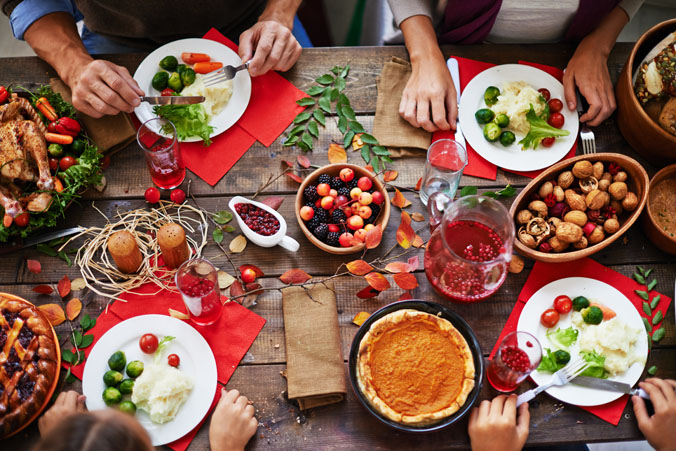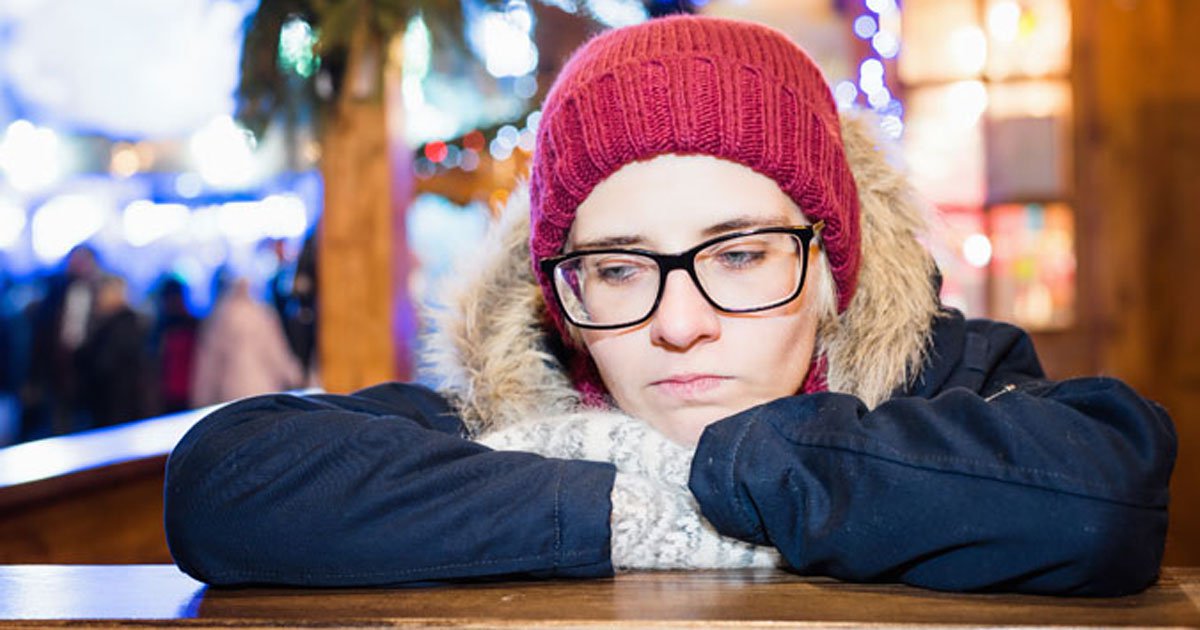How to help patients avoid stress, weight gain around the holidays


For most people, December brings presents, parties and get-togethers with ample food and drink, and fond memories of past holidays.
For some, however, the holidays can also result in feelings of anxiety, escalated levels of sadness, and overconsumption, all of which can lead to or add to medical consequences such as obesity, alcoholism and depression.
“The general mood of individuals may worsen and the number of alcohol-related fatalities may increase around the Christmas holiday,” Randy A. Sansone, MD, professor of psychiatry and internal Medicine at Wright State University School of Medicine in Dayton, Ohio and Lori A. Sansone, MD, a family medicine physician in Ohio wrote in Innovations in Clinical Neuroscience.
“Following the Christmas holiday, there appears to be a rebound phenomena with these latter behaviors — a concerning pattern that is relevant for both psychiatrists and primary care clinicians,” they continued.
However, there are some misnomers surrounding some of the emotional toll the holidays take.
“Overall utilization patterns by psychiatric patients in emergency rooms and in inpatient wards is lower as is the prevalence of self-harm behavior and suicide attempts/completions [around the Christmas holiday],” Randy and Lori Sansone added.
CDC data that looked at the suicide rate throughout the year concurred with their findings.
“The idea that suicides occur more frequently during the holiday season is a long perpetuated myth. ... The suicide rate is, in fact, the lowest in December,” CDC’s website states.
Data have shown that weight gain and drinking in the period between Thanksgiving and New Year’s is common in certain population groups.
“The holiday season seems to increase body weight in adults, even in participants seeking to lose weight and in motivated self-monitoring people, whereas in children, adolescents, and college students, very few studies were found to make accurate conclusions,” Rolando G. Díaz-Zavala, PhD, of the department of chemical and biological sciences at the University of Sonora in Mexico and colleagues wrote in the Journal of Obesity.
Other studies have shown an increase in alcohol consumption on major holidays.
Vladyslav Kushnir, MSc, and John Alastair Cunningham, PhD, of the Centre for Addiction and Mental Health in Toronto surveyed 578 people, 52% male, with a mean age of 50.4 years.
Their results, which appeared in Journal of Studies on Alcohol and Drugs, found significantly more drinks were consumed on New Year's Eve than during any of the first three weekends in December. When researchers compared Christmas with other nearby periods of time, alcoholic beverage consumption was significantly higher on Christmas than the Dec. 11 weekend and the Jan. 1 weekend and marginally greater than the Dec. 4 and Dec. 18 weekends.
Like many clinicians and medical researchers, Jennifer Caudle, DO, a board-certified family physician and associate professor of family medicine, Rowan University School of Osteopathic Medicine, Stratford, N.J., and Jared Cooney Horvath, PhD, MEd, a cognitive neuroscientist in Melbourne, Australia, agree that anxiety, stress, or the consequences of eating and drinking too much, no matter when they occur, are serious medical concerns.
Healio Family Medicine asked Caudle and Horvath to discuss ways primary care physicians can help make their patients aware of potentially unhealthy behavior and take steps to control it. – by Janel Miller
Healio: How can PCPs emphasize the adoption of better eating and drinking habits to their patients?
Horvath: There is no easy answer here. Psychologists have been struggling mightily with this issue for decades if not centuries. Perhaps the strongest strategy for this type of issue is slow, incremental change. Trying to get someone to wholesale change a behavior is unlikely to work. But, if together you can think of small, subtle ways to tweak and slowly chip away at the issue, there is a better chance for success. Start with low- or no-stakes changes. Perhaps simply by turning off the phone or not responding to e-mails for one full weekend day. Seeing as it’s the weekend, this will likely have minimal impact and will simply get the patient used to ‘shutting off’ or ‘tuning out’ for a bit. From there, tack more simple yet progressively powerful changes in place. This often works best if it is discussed and agreed upon prior to the start of the holiday season. In fact, discussions, plans, and contracts written up months in advance are not a bad idea to consider. Agreeing upon behaviors prior to the onset of stressors is never a bad plan.

Caudle: The holiday season is often about parties, get-togethers and gatherings, often eating and drinking comes with that. That’s ok, but there are a few things that we can tell our patients so the holidays are not so hard on the waistline. I tell my patients to continue their usual healthy eating habits, but moderate and modify eating and drinking as much as possible when it comes to the holiday party or get-together. Some examples of how to do this include eating a healthy snack before going to a party so that you don’t go hungry. Another suggestion is to fill up on the celery and the carrots before moving onto the chicken wings and other fried foods while at gatherings, so that you have less room for them. Remind your patients that some specialty and alcoholic drinks have lots of calories. It’s important to remember that for most people, the occasional overindulgence is ok and it’s important for our patients to not to be too hard on themselves during the holidays. But, sticking to healthy routines is still important during the holidays.
Healio: For many people, these suggestions may require breaking from long standing habits. How can PCPs conv ey the idea of eating and drinking healthy to their patients without offending them ?
Horvath: Different methods work differently for each individual. With that said, there are two good rules of thumb: 1) do not be a parent. When people feel they are being shamed or talked down to, they will be more likely to rebel and do precisely what they are being warned against doing. This is why most anti-smoking and drinking campaigns fail miserably. Goading or holding health issues over a person’s head is never a good technique; and: 2) do not avoid the truth. In an attempt to avoid babying, some physicians take the alternate tact of avoidance. Perhaps it’s best to take a page from the ‘Good Teacher’s Handbook’ at this point. In other words, it might be worthwhile to simply have patients make predictions about their holiday consumption and behaviors, then spend 5 minutes each night tracking their ‘data’ for the day (with supportive e-mail reminders!). By comparing their own predictions with their own behaviors, they will be more inclined to seek advice from you as to how to amend behaviors accordingly.
Healio: What are some of the causes and ways to prevent holiday-related stress?
Caudle: People often feel the responsibility to, spend more money than usual or entertain more than usual during the holidays. Things like hosting people at your home and doing more than you normally do either financially or as a party host can bring on stress. Memories of a lost loved one can also trigger stress. During the holidays, it’s important to remind patients to not pile on too many activities and not set unreasonable expectations. Stress can be minimized by delegating responsibilities and/or asking for help.
Healio: How can PCPs help their patients avoid the depression or the anxiety that som etimes occur during the holidays?
Caudle: As PCPs and family physicians, we need to ask our patients: ‘What are your plans for the holidays?’ ‘Are you looking forward to the holidays?’ ‘How have you been feeling lately? Any concerns that you have for the next couple of months?’ Sometimes just asking a patient how they’re feeling and how they’re anticipating the future can be very helpful. Obviously, we need to look for signs and symptoms of depression all year round, but the holidays can be a particularly troubling and problematic time for people, more so than other times, so we need to be thoughtful about this.
 "
"
Healio: What are some ways to know a patient’s anxiety is more than just the ‘holiday blues’?
Horvath: If signs and symptoms persist beyond the holiday season (into late January/early February), that is when deeper issues and discussions on the patient’s well-being should be considered.
Caudle: If a patient tells you, or if you see signs that their sleep, appetite or work habits are different, it may be time to refer them to a mental health professional.
References:
CDC. Holiday suicides: Fact or Myth? https://www.cdc.gov/violenceprevention/suicide/holiday.html. Accessed Nov. 17, 2018.
Diaz-Zavala RG, et al. J Obes. 2017:doi:10.1155/2017/2085136.
Kushnir V, Cunningham JA. J Stud Alcohol Drugs. 2014 Nov;75(6):968-72.
Sansone RA, Sansone LA. Innov Clin Neurosci. 2011 Dec;8(12):10-3.
Disclosures : Healio Family Medicine was unable to determine Caudle’s relevant financial disclosures prior to publication. Horvath reports authoring the book Stop Talking, Start Influencing.
